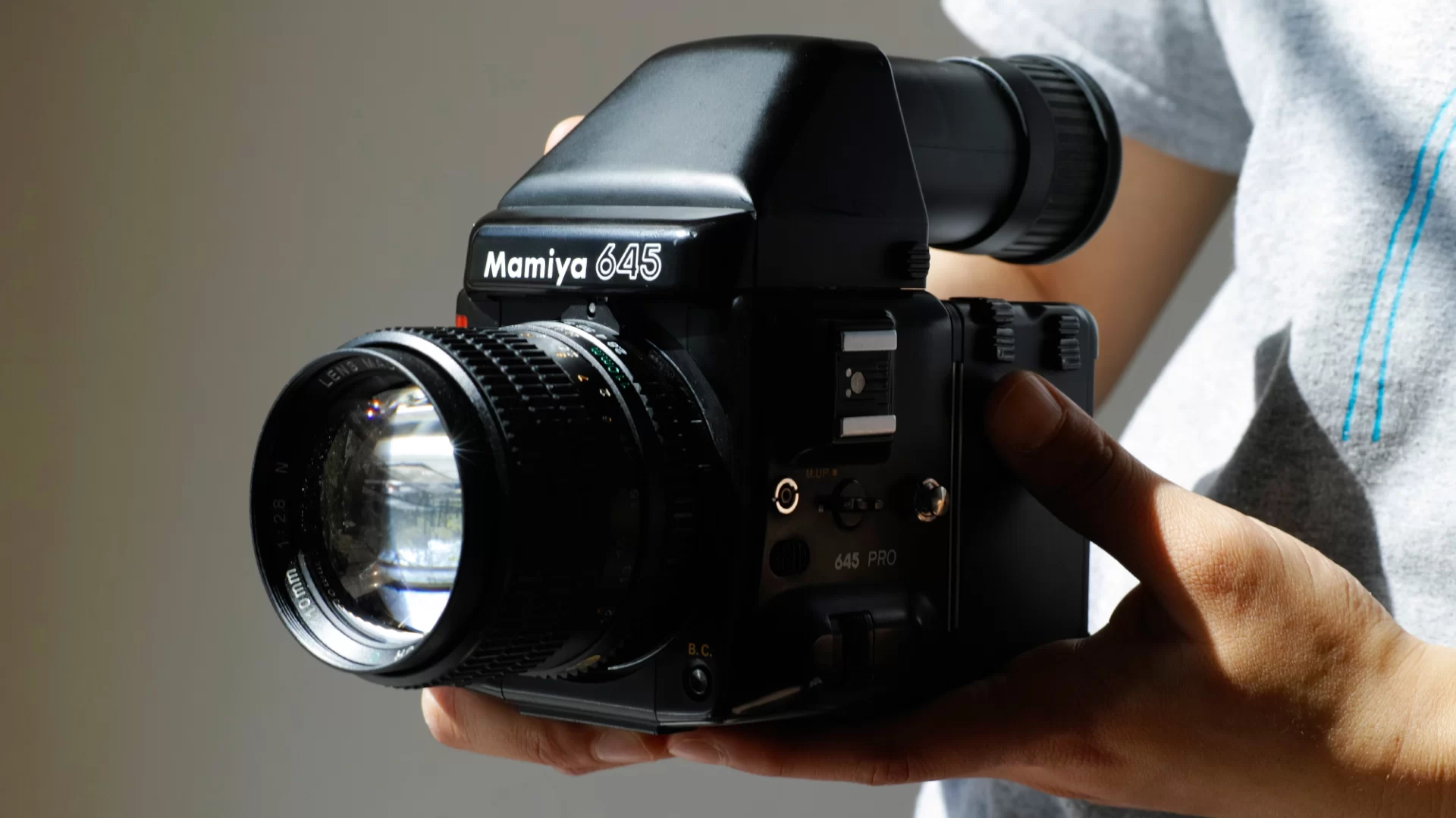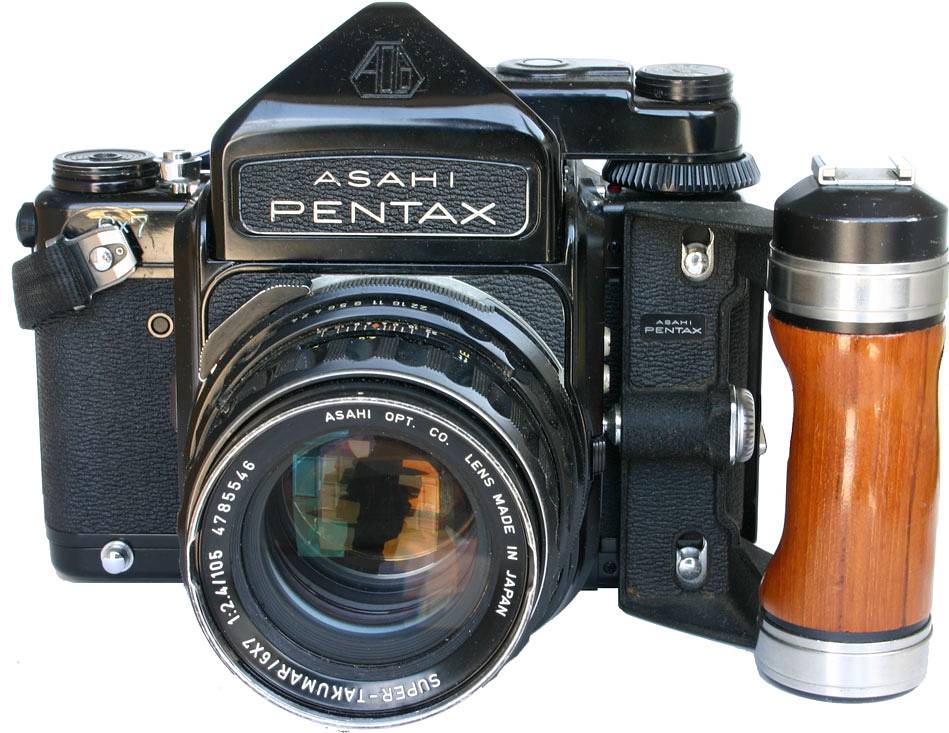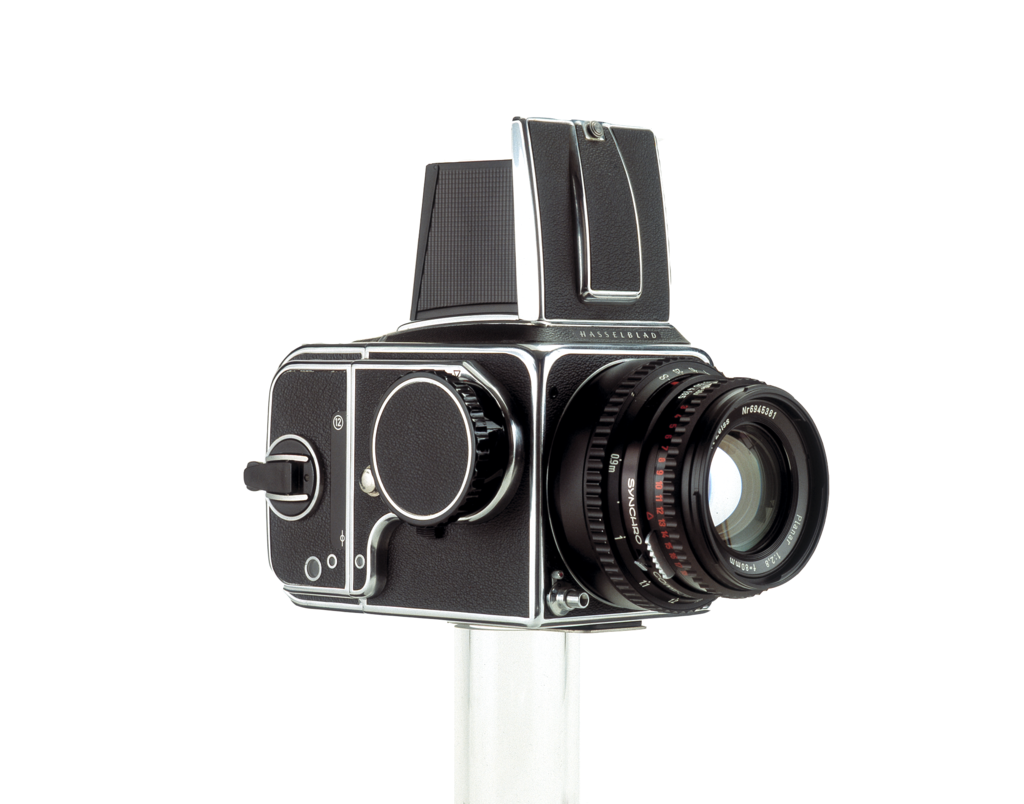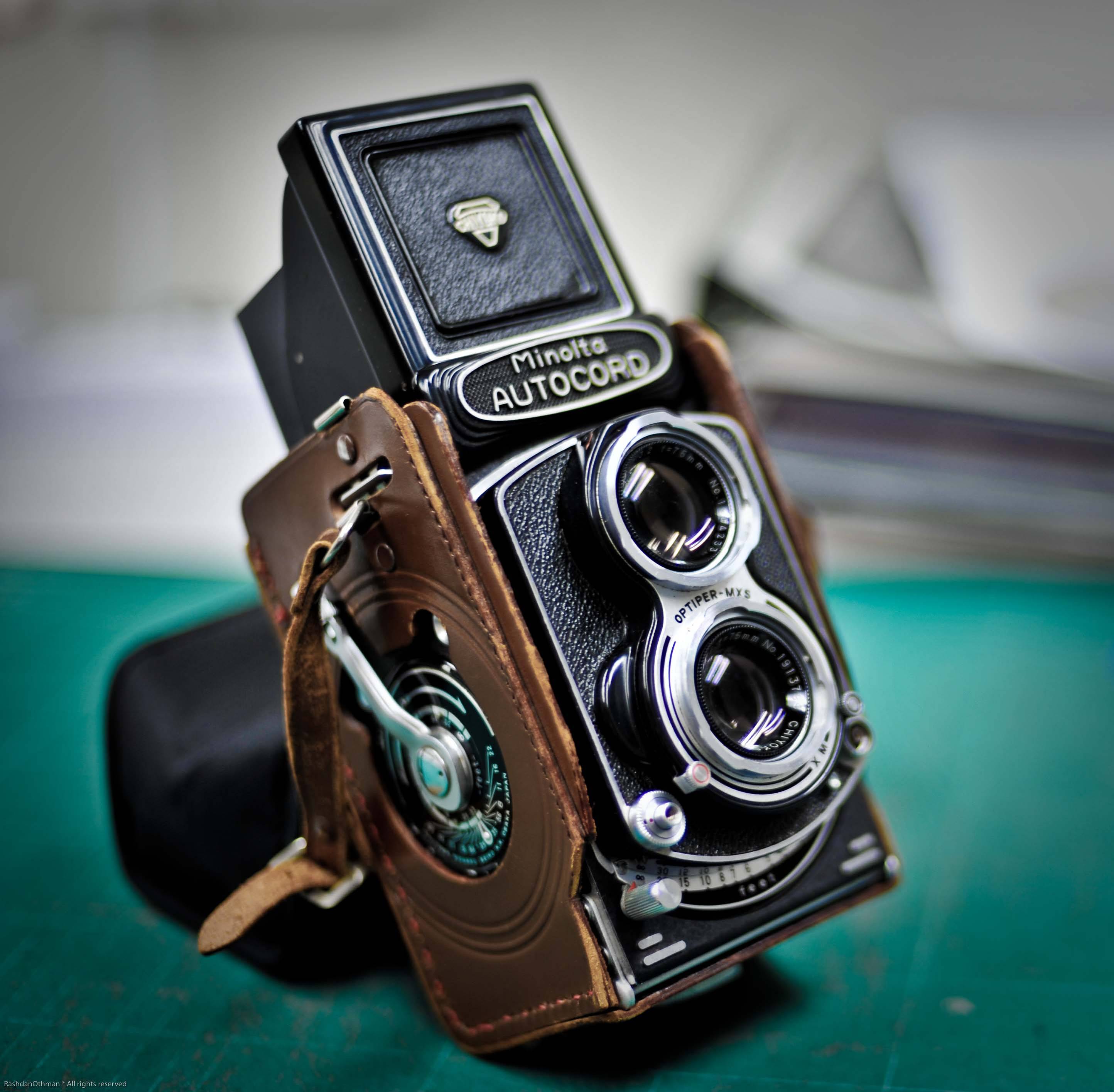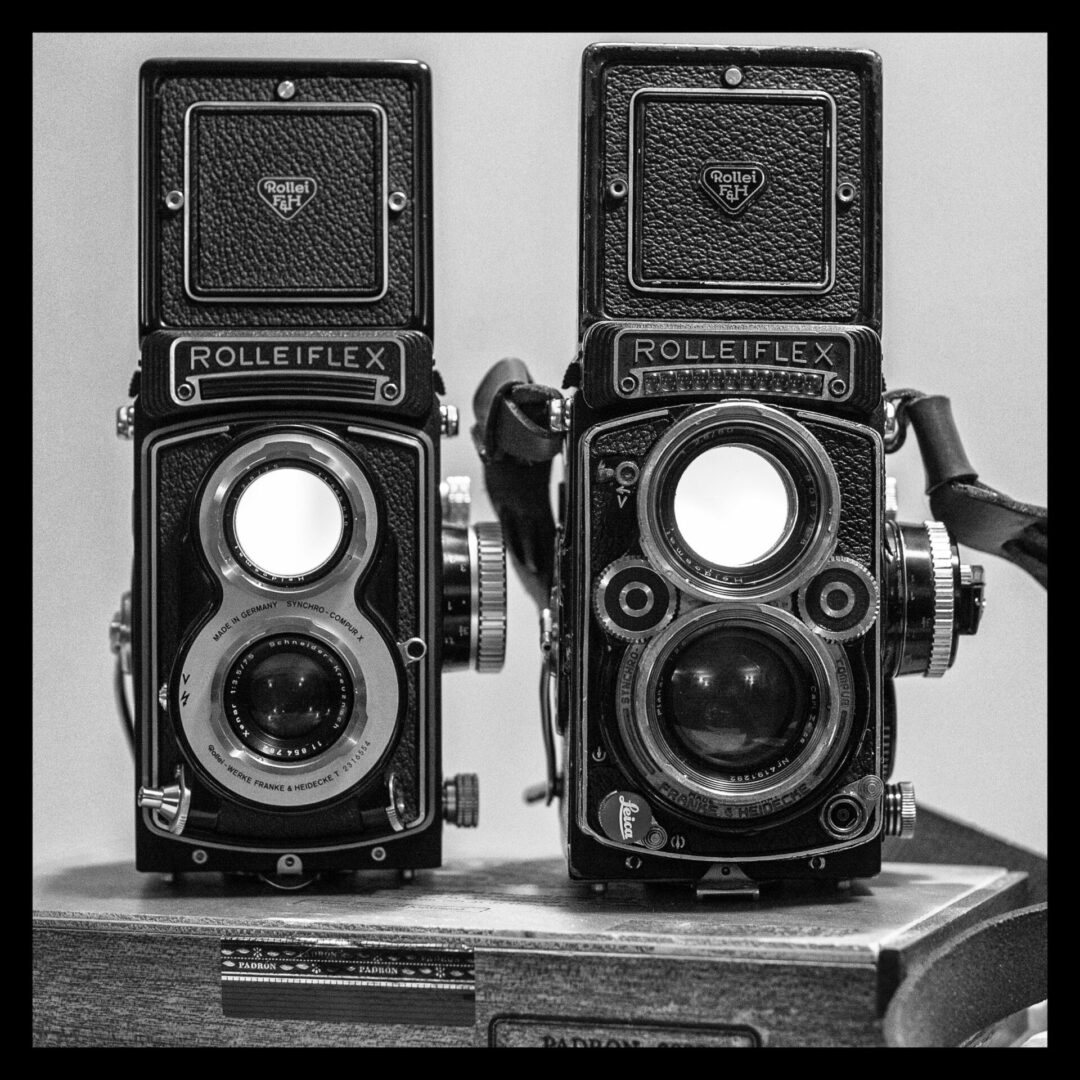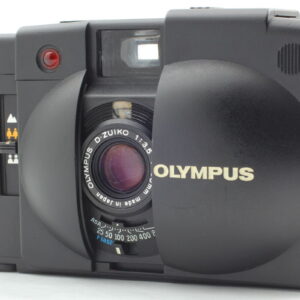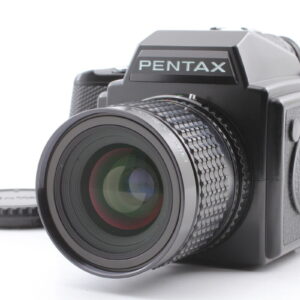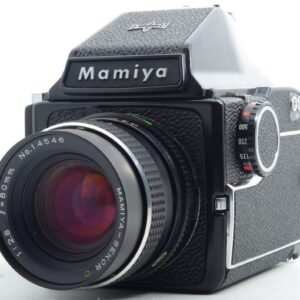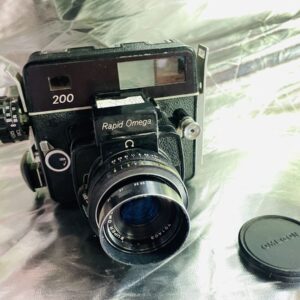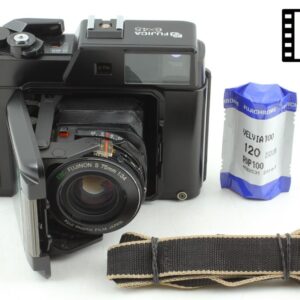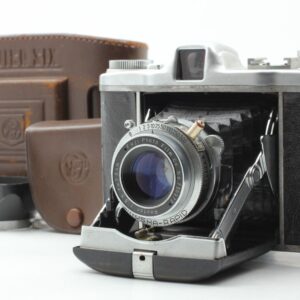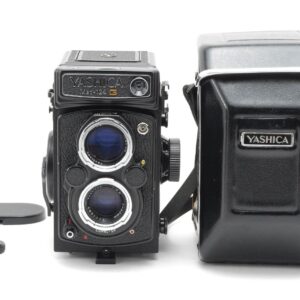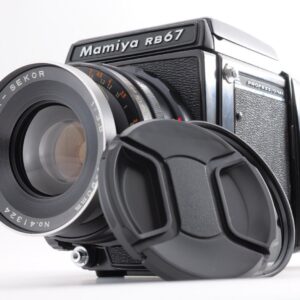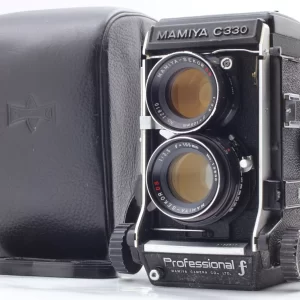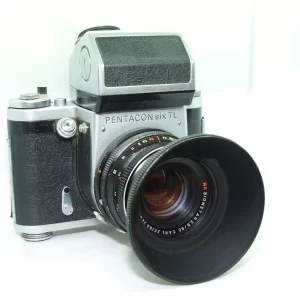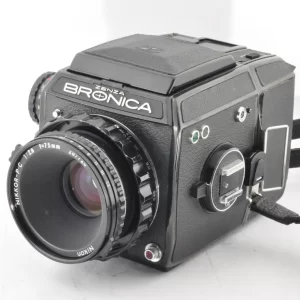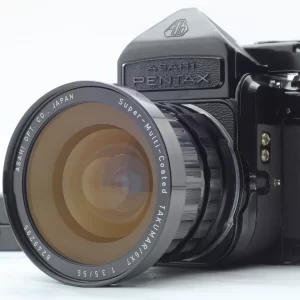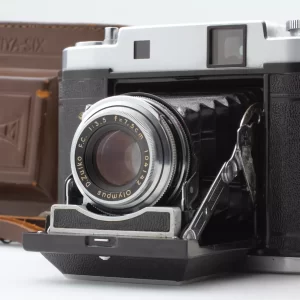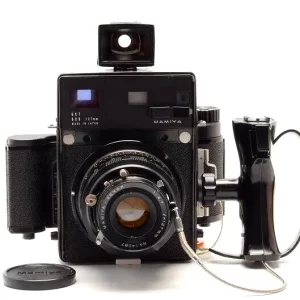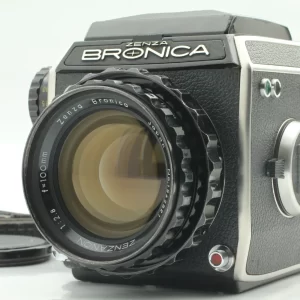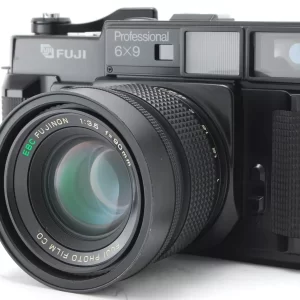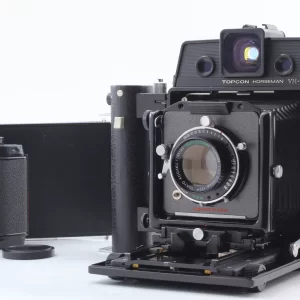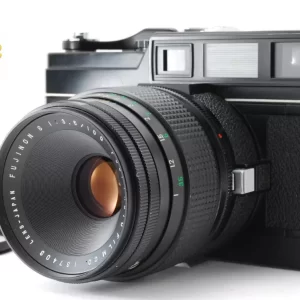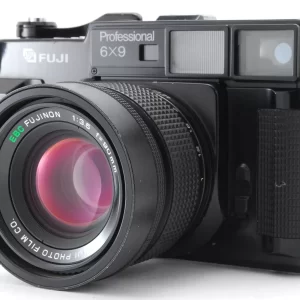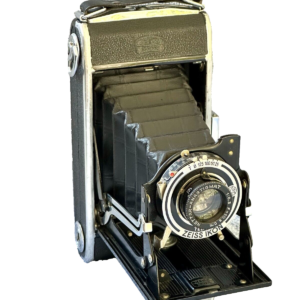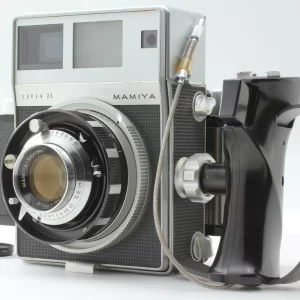Best Medium Format Film Cameras
A Complete Guide For Beginners & Pros | Most Affordable And Best Deals For Sale
Whether you’re a professional photographer, an avid film shooter, or just starting out in the world of analog photography, our comprehensive guide will introduce you to the top medium format film cameras available today, along with exclusive deals and discounts.
Scroll Through To Learn About Each Camera
Mamiya 645
Pentax 6×7 / Pentax 6×7 MLU
Hasselblad 500
Minolta Autocord Series TLR
Rolleiflex TLR
Mamiya 645
Capture the Magic of Medium Format: Exploring the Mamiya 645 Series
If you’re a photography enthusiast, you’re probably familiar with Mamiya’s iconic C series of 6x6cm TLRs, Mamiya Six, Mamiya Press, and RB67 6x7cm medium format cameras. But did you know that Mamiya also ventured into the 645 format in 1975, bringing the magic of medium format to a whole new level?
The Mamiya 645 was a game-changer, as it was the first medium format SLR to use the 645 format, allowing for 15 shots on 120 film or 30 shots on 220 film (compared to the 12 shots on 120 and 24 shots on 220 for the more popular 6×6 format). With three generations of cameras released over the years, the Mamiya 645 series has evolved into a legendary lineup that has captured the hearts of countless photographers.
Let’s take a closer look at what makes the Mamiya 645 series so special. The first generation included the M645, M645 1000S, and M645 J, offering affordable options for those looking to enter the world of medium format. While the second generation introduced the 645 Super, 645 Pro, 645 Pro-TL, and 645E, which are known for their outstanding performance, they may not be the most budget-friendly choices. However, fear not, as the original M645 and its successor, the M645 1000S, remain affordable options that are worth considering.
One unique feature of the first-generation Mamiya 645 bodies is that they do not have interchangeable backs, unlike most other medium format cameras of the time. While this may not be a deal-breaker for most photographers, some may prefer the flexibility of swapping film stocks before finishing a roll. However, the bodies do come with interchangeable finders, including waist-level and eye-level prisms, with options for metered and non-metered versions. The metered AE prism even allows for aperture-priority autoexposure, adding versatility to your shooting experience. The waist-level finders are particularly sought after and can command higher prices due to their popularity among photographers.
In addition to the interchangeable finders, the Mamiya 645 series also offers five interchangeable focusing screens, including matte, microprism, checker, rangefinder spot with microprism, and rangefinder spot. This allows you to customize your viewing experience to suit your shooting style. Plus, there are additional accessories available, such as pistol handgrips with or without shutter triggers, and a power drive grip with automatic film advance, to further enhance your shooting comfort and convenience.
When it comes to lenses, the Mamiya 645 series does not disappoint. The standard and most common lens you’ll find paired with a Mamiya M645 is the Sekor C or Sekor N 80mm f/2.8, which delivers excellent image quality and is perfect for a wide range of photographic genres. But that’s not all – the Mamiya 645 series boasts a vast library of lenses, including options like the Sekor 55mm f/2.8, 120mm f/4 APO Macro, 145mm f/4, 150mm f/3.5, 55-110mm f/4.5, and 105-210mm f/4.5, which are all very affordable choices. If you’re looking for speed, the Sekor C and Sekor N 80mm f/1.9 are the fastest lenses in the lineup and among the fastest medium format lenses ever made.
One of the great advantages
Pentax 6×7 / Pentax 6×7 MLU
Imagine a camera that’s as massive as a 35mm SLR but capable of producing stunning 60mm x 70mm images. That’s the Pentax 6×7, a legendary medium format camera released by Asahi Pentax in 1969. Weighing in at a hefty 5.1 pounds with the standard 105mm f/2.4 lens, this beast of a camera is not for the faint of heart, but its performance is nothing short of mesmerizing.
One of the first things you’ll notice about the Pentax 6×7 is its familiar pentaprism finder shape and lever-operated film advance, which are reminiscent of traditional 35mm SLRs. It’s a camera that feels instantly familiar, yet it’s capable of delivering jaw-dropping medium format results. With interchangeable prisms and focusing screens, including waist-level and TTL metered prism options, you have the flexibility to customize your shooting experience. And for those who appreciate a touch of vintage style, the iconic left-handed accessory wood grip adds a touch of fashionable flair to this photographic powerhouse.
But that’s not all! In 1976, Asahi Pentax released the 6×7 MLU, which stands for Mirror Lock-Up, a game-changing feature for tripod-based landscape, still-life, or slow shutter speed work. This nifty mechanism minimizes vibrations caused by the camera’s gigantic mirror, ensuring your shots come out crisp and sharp. It’s a true game-changer for photographers who demand the utmost precision in their work.
When it comes to lenses, the Pentax 6×7 system offers an extensive range of options. The Pentax Takumar 105/2.4 is the standard “kit” lens and a true gem in the system. But the best part? Pentax 6×7 or Pentax 67 lenses are surprisingly affordable, with many options priced under or around $100. From the versatile SMC Takumar 45/4 to the stunning 150/2.8, you can build an impressive lens collection without breaking the bank. And with adapters available for almost every DSLR or mirrorless mount, you can easily adapt these lenses to modern digital cameras, opening up a world of creative possibilities.
As a medium format enthusiast, the Pentax 6×7 is one of my all-time favorites. Yes, it’s hefty, and yes, it’ll give you a workout, but the results are worth every ounce of effort. Its SLR-like form factor combined with its massive image size make for a truly unique shooting experience that’s both nostalgic and awe-inspiring. So if you’re ready to step into the world of medium format magic, grab a Pentax 6×7 and get ready to be captivated by its unparalleled performance. Trust me, it’s a journey you won’t want to miss!
Hasselblad 500 Series
Hey, photography enthusiasts, have you heard of the Swedish camera manufacturer, Hasselblad? They’re up there with the greats, like Leica and Zeiss, and their 500 series is what launched them to fame.
But before the 500 series, Hasselblad developed what they called “the ideal camera” in the late 1940s. It was a 6×6 medium format camera known as the 1600F, followed soon after by the 1000F. Revolutionary for its modular design, with interchangeable lenses, viewfinders, winders, and film backs. TLRs were the norm for medium format cameras, but none had any of these capabilities at the time.
In 1957, Hasselblad debuted the 500C, the first model in its new series of cameras using interchangeable leaf-shutter lenses. This eliminated issues inherent in the focal plane shutter of the 1600F/1000F and allowed flash synchronization at every speed. A modified variation of the 500C would become the first camera to see outer space in the Apollo and Gemini flights. How cool is that?
From the introduction of the 500C, Hasselblad issued incremental upgrades in new models, such as the 500C/M, 501C, and 501CM, ending with the 503CW, which stopped production in 2013. These models formed the core of the Hasselblad “V System,” a name that only came about once Hasselblad released the “H System” in 2002 to differentiate the two. Although the V System includes cameras outside the 500 series, none are as desirable nor as iconic.
While the bodies are known for their build quality, reliability, ergonomics, and aesthetics, it is arguably the line of incredible lenses that take the Hasselblads to another level. With over 70 lenses in the V system, the C and C T* lenses are the earliest, while the CF, CF FLE, and CF IHI lenses came about later. With one exception, all C and C T* lenses were made by Carl Zeiss, making for the ultimate fusion of two photography titans.
The earlier Zeiss C lenses feature a black, anti-reflection coating on the inside, and those manufactured from 1959 to 1974 were single-coated. In 1973, Zeiss began to implement its famous T* multicoating to the lenses, hence the C T* — this makes for improved flare control, greater contrast, and improved transmission (T-stop). The lenses range from a 30/3.5 F-Distagon (17mm FF-equivalent) to a 500/8 Tele-Tessar (275mm FF-equivalent), with the Zeiss 80/2.8 Planar being the “standard” lens. And if you’re lucky enough to come across it, there’s even one zoom lens, the Schneider 140-280/5.6 Variogon.
With some of the most extensive lens options and possibly the widest and most versatile selection of accessories of any medium format system, the V system’s 500 series is the best SLR medium format camera system you can buy. To top it off, the 500 series is compatible with many medium format digital backs, including the current CFV II 50C. So, if you’re a photography enthusiast looking for a top-of-the-line camera, Hasselblad’s 500 series might just be the perfect fit for you!
Minolta Autocord Series TLR
Hold on to your hats, folks, because we’re about to take a trip back in time to the post-World War II era in Japan. It was a time of great reconstruction, but also of great innovation. And in 1955, Chiyoda Kogaku Seiko K.K. (or “Chiyoda Optics and Precision Industry Co., Ltd.” for those of us who don’t speak Japanese) released their answer to the premium TLR market: the Minolta Autocord MXS.
But that’s not all! That same year, they also unleashed the Autocord MXV and Autocord L, which featured a Seikosha Rapid shutter with an increased top speed of 1/500 (up from 1/400) and a selenium meter. It was like a battle of the TLRs, and Minolta was coming out swinging.
Between 1955 and 1966, Minolta released at least seventeen different models of the Autocord. That’s right, seventeen! While the differences between each model were usually minor, they all shared some major features that made them stand out from the crowd. For starters, they all had the highly-regarded 4 element/3 group Tessar-type 75mm f/3.5 Rokkor lens. But that’s not all! They also had shutter speeds down to one second, a crank advance with automatic shutter cocking and frame counting, and the ability to cock the shutter without advancing the film (allowing for double exposures). Talk about innovative!
One of the coolest features of the Autocord was the crank advance and automatic shutter cocking. This was a rare feature for TLRs of the time, and was only found on a couple of other models. But Minolta wasn’t content with just copying the competition. Oh no. They also designed the camera with a very ergonomic and smooth focus lever that allowed for one-fingered focusing. Other TLRs required the user to shift the camera from one hand to another in order to focus and then advance the film. But not the Autocord! Everything could be done with the user’s right hand while the left cradled the camera. It was like Minolta was saying, “We see your design flaws, and we raise you a better camera.”
Unfortunately, the focus lever was also the Achilles’ heel of the Autocord. It was made of an extremely brittle zinc/aluminum alloy that often snapped off. But fear not! There are DIY modifications and 3D printed replacements available online. And as long as you’re careful with the camera, you shouldn’t encounter any issues.
Now, let’s talk about the real star of the Autocord: the Tessar-design 75/3.5 Rokkor lens. Many photographers of the time favorably compared it to the excellent Zeiss Tessar lenses found in the Rolleiflex series. That’s high praise, folks.
And the best part? The Autocord series was incredibly affordable for the quality of camera you were getting. If you’re in the market for one, we recommend finding a model without a meter, as those old selenium or CdS meters rarely stood the test of time. Plus, the streamlined design of the meter-less versions is more aesthetically pleasing in our opinion.
So there you have it, folks. The Minolta Autocord: a TLR that was way ahead of its time.
Rolleiflex 2.8/3.5
Imagine you’re strolling through the streets of Braunschweig, Germany, after the dust has settled from World War II. Amidst the rubble, you spot a group of determined individuals huddled around a damaged factory. Upon closer inspection, you realize it’s the Franke & Heidecke company, famous for its Rolleiflex and Rolleicord series of TLRs. They’ve decided to pivot to a more premium design and create the iconic “Letter Model” series.
The Letter Model series is denoted by a letter at the end of its name, such as Rolleiflex 2.8A or Rolleiflex 3.5C. Fun fact: the numbers indicate the f-stop, with the 2.8 series featuring the fastest f/2.8 lenses. This was a major change from previous models and those of other manufacturers, which all used f/3.5 lenses. The Rolleiflex Letter Model series uses a crank winder to advance the film and simultaneously tension the shutter. It’s a bit like a secret handshake – only other Rolleiflex owners will know what you’re doing when you wind that crank.
The move from a Zeiss Tessar lens to a more complex and superior Zeiss Planar design was a game-changer for the Letter Model series. Some models even adopted a Schneider Kreuznach Xenotar lens. The early Rolleiflex 2.8B was fitted with an 80mm Zeiss Biometar, making it an extremely rare find.
While the 3.5 models continued with the use of 75mm lenses, the 2.8 series moved to 80mm. Now, the difference may seem minor, but in full-frame equivalence, it’s about 37.5mm versus 40mm. Every millimeter counts when it comes to capturing that perfect shot.
While all Rolleiflex models command a premium over most other TLRs, the Letter series takes it to a whole new level. As you might expect, the 2.8 models are even more expensive than the 3.5 series. But hey, if you’re going to invest in a camera, why not choose one that’s both a tool and an investment? Plus, with the superior Zeiss Planar lenses, your shots will be a step above the rest.
So, if you ever find yourself in Braunschweig, keep an eye out for the Franke & Heidecke factory. Who knows, you might stumble upon a rare Rolleiflex 2.8B and become the envy of every photography enthusiast.
Medium Format Film Cameras For Sale
Welcome to this guide dedicated to the best medium format film cameras and deals for sale! If you’re a film photography enthusiast, you know that medium format cameras offer a unique and distinct charm, capturing images with unmatched clarity, depth, and character.
We’ll cover the features, specifications, and performance of these cameras, providing valuable insights and recommendations to help you find the perfect medium format film camera at the best possible price. Join us as we celebrate the art and joy of shooting film, and discover the best medium format cameras for your creative endeavors.
Showing all 24 results
-

Olympus XA2 For Sale
$99.99 -
Sale!

Pentax 645 Medium Format Film Camera
Original price was: $559.99.$459.99Current price is: $459.99. -
Sale!

Mamiya M645 Medium Format Film Camera
Original price was: $385.00.$319.00Current price is: $319.00. -
Sale!

KONI OMEGA RAPID 200 Medium Format Rangefinder 6×7 Camera 90mm f/3.5
Original price was: $180.00.$147.00Current price is: $147.00. -
Sale!

Mamiya 645 Pro Medium Format Camera C With 80mm f/2.8 Lens
Original price was: $635.00.$599.99Current price is: $599.99. -
Sale!

Fuji Fujica GS645 Pro 6×4.5
Original price was: $650.00.$589.99Current price is: $589.99. -
Sale!

Fuji Super Fujica
Original price was: $130.00.$99.00Current price is: $99.00. -
Sale!

YASHICA Mat 124G 6×6
Original price was: $500.00.$449.99Current price is: $449.99. -
Sale!

Mamiya RB67
Original price was: $500.00.$419.99Current price is: $419.99. -
Sale!

Mamiya C330 Pro
Original price was: $350.00.$299.99Current price is: $299.99. -
Sale!

Pentacon SIX TL PRISM
Original price was: $560.00.$447.00Current price is: $447.00. -
Sale!

Mamiya RZ67 Pro
Original price was: $850.00.$799.99Current price is: $799.99. -
Sale!

Zenza Bronica EC
Original price was: $400.00.$333.99Current price is: $333.99. -
Sale!

Pentax 6×7
Original price was: $550.00.$499.99Current price is: $499.99. -
Sale!

Mamiya-6 AUTOMAT
Original price was: $350.00.$299.99Current price is: $299.99. -
Sale!

Mamiya Universal Press
Original price was: $400.00.$329.99Current price is: $329.99. -
Sale!

Zenza Bronica C2
Original price was: $400.00.$320.00Current price is: $320.00. -
Sale!

Fuji Fujifilm Fujica GW690
Original price was: $700.00.$549.99Current price is: $549.99. -
Sale!

Horseman VH-R
Original price was: $600.00.$460.00Current price is: $460.00. -
Sale!

Fujifilm Fujica GM670
Original price was: $600.00.$500.00Current price is: $500.00. -
Sale!

Fujica Fujifilm Fuji GSW690
Original price was: $550.00.$499.99Current price is: $499.99. -
Sale!

Fuji Fujifilm GX680 III
Original price was: $699.00.$499.99Current price is: $499.99. -
Sale!

Zeiss Ikon Nettar
Original price was: $150.00.$99.00Current price is: $99.00. -
Sale!

Mamiya Press Super 23
Original price was: $200.00.$189.00Current price is: $189.00.

